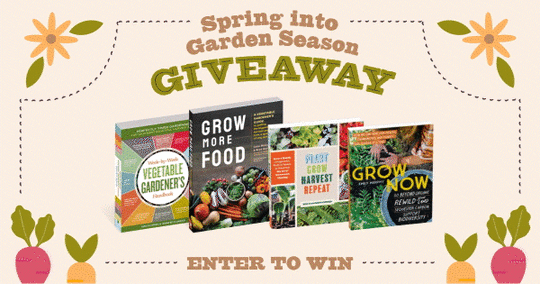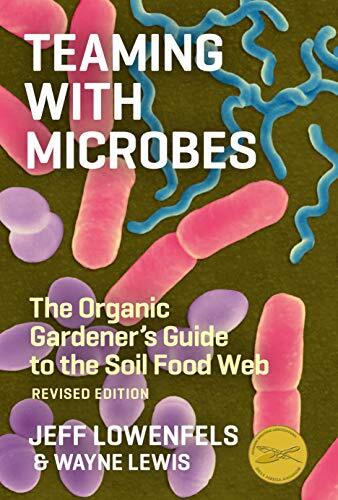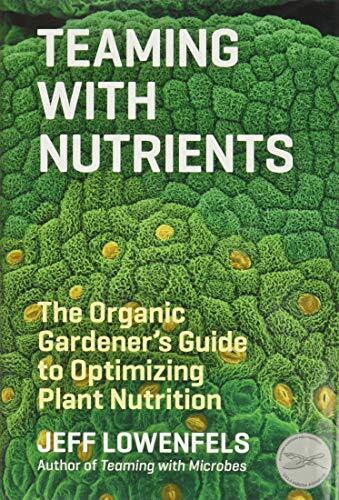Colin McCrate's Blog, page 5
September 20, 2022
Freezing the harvest

We mix a variety of tomatoes in our frozen sauce! Photo from our newest gardening book, Grow More Food!
It’s been a good year for tomatoes in the Pacific Northwest. The harvest season started a little bit late, but the warm fall weather has helped ripen most of the fruit on our vines. If you plant more than one or two tomato plants in your garden, it’s almost impossible to eat everything fresh before it spoils. In September, we spend just as much time in the kitchen processing crops as we do outside in the garden. There are many ways to process and store tomatoes, but freezing has become our preferred technique. We still pull out the canning supplies each fall for jams and pickles, but find ourselves putting up fewer tomatoes in jars, and freezing more of them in cubes. Freezing can save you time during the busy harvest season and make it easier to divy up your bounty when it’s time to cook.
View this post on InstagramA post shared by Seattle Urban Farm Co | Garden Creators (@seattleurbanfarmco)
Freezing is a fast and easy way to store perishable produce with nutrients and flavor intact. We recommend blending up your tomatoes before freezing because the thawed tomatoes will end up mushy anyway. To save room in the freezer, you can cook blended fruit down until the liquid is reduced by about ⅓-½ before freezing, but this step isn’t necessary. You can also get fancy and cook your tomatoes into your favorite sauce, adding the herbs and spices at freezing time so it’s all ready to kick start your favorite recipe later this winter. You can be your very own Blue Apron.
Ice cube trays are a great tool for freezing usable amounts of tomatoes. We use a combination of ½ cup and ¼ cup silicone trays to freeze our blended fruit. Once the cubes are set, we remove them from the tray, pack them into plastic bags, and throw them back in the freezer. These manageable sized cubes make it easy to grab just what you need for a single recipe, no thawed leftovers sitting in the fridge taunting you each day until they grow mold.
Give it a try and let us know how it goes!
August 15, 2022
The new Freyr trellis!
 Hello again!
Hello again!Last week, we shared our new logo and hinted that we’re starting to make our own line of garden tools. This week we’re introducing the first of those tools! The Freyr trellis…it’s a trellis, but it’s unlike any other you’ll find.
Trellises are an essential element of any garden. They support tall, vining, and top-heavy plants. They also provide an opportunity to add structure and beauty to the landscape.
Many of the crops you love to grow in your garden benefit from trellising. Tall crops like tomatoes; vining crops like cucumbers, beans and peas; even top-heavy fruiting crops like peppers and eggplant.
However, we’ve found that many trellises are just too small or too flimsy to support full-size plants. We’ve also noticed that many trellises only last a season or two, and they just aren’t that attractive.
We made the our trellis tall enough and strong enough to support the weight of the biggest, healthiest vegetable plants you can grow. It should be the last trellis you ever need to buy, and we think it looks pretty cool too.
The Freyr trellis works with a technique called string trellising. String trellising is preferred by many professional vegetable farmers and makes it easier to manage, prune, and harvest your crops. If you use compostable twine, it makes end-of-season cleanup easier than ever.
Our goal was to create the world’s most versatile, durable, beautiful, and sustainable trellis. We think we’ve done that.
You can learn more about the trellis by watching the video below and by following us on Instagram (@seattleurbanfarmco).
We’re producing the trellis in small batches, so we can maintain the highest-quality manufacturing process. We think this first batch will sell out quickly and we’d like to offer all of our newsletter subscribers early access to the PRE-SALE on our new web shop.
Visit our new SHOP to order your trellis!
It’s a brand-new product, so if you have any questions that we haven’t addressed, please email us at info@seattleurbanfarmco.com
Thanks,

Hilary and Colin
August 9, 2022
A note from Hilary Dahl and Colin McCrate
This is our 15th year in business, and we figured a milestone that big deserves some love. We have a few ideas up our sleeves, but the first thing we wanted to share is our new logo. We took this opportunity to reimagine ourselves a bit and ended up with a cute little gnome. Why a gnome? In some of our favorite folk stories, gnomes are friendly creatures that help tend to gardens when people aren’t around. A lot like us.
We have big plans for the next 15 years of Seattle Urban Farm Company, but our existing Seattle-based vegetable garden business isn’t going anywhere. Our goal has always been, and remains, to run a sustainable business that supports our entire community: from our team here at SUFCo, to our clients, to our larger network of gardeners all around the world. Over the years we’ve helped hundreds of families and businesses create beautiful and productive landscapes, and we plan to continue doing that.
We’ve learned a lot from working on all of these different gardens and farms. Each day brings new challenges and new ideas to help make gardening more successful and efficient. We’re using some of these innovations to develop new products to help you grow a more beautiful, productive, and manageable vegetable garden.
We’re super excited to share these new products with you. Stay tuned for some more exciting updates over the next week, we’re so thrilled to have you along on this journey with us.
Thanks,
Hilary and Colin

April 13, 2022
How to "pot up" your tomatoes and peppers!

Use this technique to grow the healthiest tomato and pepper plants!
The need to pot up plants depends on the specific crop, your climate and the vagrancies of the particular season. Many crops can be germinated in shallow flats (plug trays, soil blocks, open flats) and then moved directly into the garden. The most commonly potted up plants are heat loving and very cold sensitive crops such as tomatoes, peppers and eggplant. A standard procedure would be to germinate all crops in shallow flats, choose the healthiest individuals from each variety for potting up and graduate these to 4” pots or larger for continued indoor grow out. Almost any crop should be ready for outdoor planting directly from a 4” pot unless you start your crops incredibly early in the season, at which point potting up into gallons might be necessary or desired.
March 17, 2022
Spring into Garden Season Giveaway

We’ve teamed up with our friends over at Johnny’s Selected Seeds, Timber Press, and Workman Publishing to give you the chance to win the Spring into Garden Season Giveaway packed with growing supplies and vegetable seeds, plus four must-have gardening books to get your vegetable garden growing!
The complete prize package includes all of these gardening goodies:
Books courtesy of Timber Press and Storey Publishing
Grow Now (Timber)
Plant Grow Harvest Repeat (Timber)
Grow More Food (Storey)
Week-by-Week Vegetable Gardener’s Handbook (Storey)
Growing Supplies courtesy of Johnny’s Selected Seeds
Vegetable Seeds courtesy of Johnny’s Selected Seeds
March 16, 2022
Building a raised bed vegetable garden video: Drip Irrigation Parts List
Here’s a list of all the irrigation parts we talk about and use in our drip irrigation video series on building a raised bed vegetable garden:
landscape staples (irrigation line hold-downs)
tape loc (attach drip lines to mainline)
tape coupler (repair drip tapes)
Building a raised bed vegetable garden video: Lumber cut list
How to build a wood-framed raised bed. Part 4 of our new YouTube series, “Building a raised bed vegetable garden”, is all about raised bed construction. Learn how to choose lumber, design your beds and make them beautiful and long-lasting.
The following is the cut list for the 4’x8’x16” raised beds we build in the series:
One 4’x8’x16.5” raised bed =
Buy list:
-(9) 8’ long 2”x6”
-(1) 8’ long 2”x4”
-(1) 8’ long 4”x4”
Cut list:
-(6) 2”x6” @ 8’ (or 7’11” if needed to make them all even) - long sides
-(6) 2”x6” @ 4’ (you’ll cut an 8’ in half, so each is actually about 1/8” short of 4’) - short sides
-(2) 2”x4” @ 15.5” - verticals for cross brace
-(1) 2”x4” @ 46.5” - horizontal cross brace
-(4) 4”x4” @ 15.5” - corner posts
 We want you to love your garden.
We want you to love your garden. We’ve managed hundreds of gardens, from urban rooftop sites, to backyard beds, to multi-acre farms. In our books, we share the tips and tricks we’ve learned along the way, so you can grow a more beautiful, productive and efficient garden, and have fun doing it!
 Grow More Food: A Vegetable Gardener's Guide to Getting the Biggest Harvest Possible from a Space of Any Size By McCrate, Colin, Halm, Brad
Grow More Food: A Vegetable Gardener's Guide to Getting the Biggest Harvest Possible from a Space of Any Size By McCrate, Colin, Halm, Brad  Food Grown Right, In Your Backyard: A Beginner's Guide to Growing Crops at Home By McCrate, Colin, Halm, Brad
Food Grown Right, In Your Backyard: A Beginner's Guide to Growing Crops at Home By McCrate, Colin, Halm, Brad
Our new how-to video series: Building a raised bed vegetable garden!
Learn how to pick a garden site, build vegetable garden beds and install drip irrigation.
Subscribe to our new YouTube channel! We want you to love your garden.We’ve managed hundreds of gardens, from urban rooftop sites, to backyard beds, to multi-acre farms. In our books, we share the tips and tricks we’ve learned along the way, so you can grow a more beautiful, productive and efficient garden, and have fun doing it!
 Grow More Food: A Vegetable Gardener's Guide to Getting the Biggest Harvest Possible from a Space of Any Size By McCrate, Colin, Halm, Brad
Grow More Food: A Vegetable Gardener's Guide to Getting the Biggest Harvest Possible from a Space of Any Size By McCrate, Colin, Halm, Brad  Food Grown Right, In Your Backyard: A Beginner's Guide to Growing Crops at Home By McCrate, Colin, Halm, Brad
Food Grown Right, In Your Backyard: A Beginner's Guide to Growing Crops at Home By McCrate, Colin, Halm, Brad
Our new video series: Building a raised bed vegetable garden!
Learn how to pick a garden site, build vegetable garden beds and install drip irrigation.
We want you to love your garden.We’ve managed hundreds of gardens, from urban rooftop sites, to backyard beds, to multi-acre farms. In our books, we share the tips and tricks we’ve learned along the way, so you can grow a more beautiful, productive and efficient garden, and have fun doing it!
 Grow More Food: A Vegetable Gardener's Guide to Getting the Biggest Harvest Possible from a Space of Any Size By McCrate, Colin, Halm, Brad
Grow More Food: A Vegetable Gardener's Guide to Getting the Biggest Harvest Possible from a Space of Any Size By McCrate, Colin, Halm, Brad  Food Grown Right, In Your Backyard: A Beginner's Guide to Growing Crops at Home By McCrate, Colin, Halm, Brad
Food Grown Right, In Your Backyard: A Beginner's Guide to Growing Crops at Home By McCrate, Colin, Halm, Brad
December 3, 2021
Episode 114: Garden Soil Ecosystems with Jeff Lowenfels

To prepare soil for planting, loosen with a fork, instead of rototilling or French digging, to limit disruption of the soil food web.
The quality of produce you grow is dependent on the quality of your soil. We are big advocates of doing everything possible to make garden soil the best it can be right from the start, and then working year after year to maintain and improve its quality. In this episode we're joined by award winning author Jeff Lowenfels to discuss the soil food web and garden soil ecosystems.
HOW TO LISTEN:Subscribe on iTunes, Stitcher, Spotify, or any of your favorite podcast players to have new episodes sent directly to your device.
Listen right now in your browser by clicking above.
SHOW NOTES:In this episode, we discuss:
How to care for your garden soil in a way that supports and enhances the soil food web.

We add a thick layer of compost to our vegetable gardens each season to feed the soils microorganisms. Photo from our most recent book “Grow More Food”
Important Take-aways:
Most existing soils, especially in a residential yard or urban plot, will not have enough available minerals or nutrients to support your vegetable plants. Thus, it’s vital that you take steps to add these amendments when building your garden, and continually maintain them over time. If you’re doing a good job, the soil quality should improve with each gardening season.
Six simple things you can do to maintain your soil quality from one year to the next:
Add a 1- to 2-inch layer of compost over your garden at least once a year.
Monitor and maintain proper soil pH.
Use additional organic fertilizer every season to ensure proper nutrient levels.
Protect your soil with mulch or cover crops, especially during the winter.
Have your soil tested every 2-3 years.
Don’t till your soil.
Key Terms:
Humus: the substance that is created when soil microorganisms break down raw organic matter — is an essential component for good garden soil. It acts as a “glue” to hold soil aggregates together and creates what growers call “tilth” (good soil structure). Humus gives garden soil a wonderful loose crumbly feeling, and yet such soil doesn’t completely collapse into individual particles when it is worked. Humus also acts like a sponge in your soil; it helps maintain proper moisture levels. In soil without humus, water will either leach away too quickly for plants to use (very sandy soil), or will make the soil waterlogged and difficult to work for long periods (very clay-rich soils). Humus-rich soil will take up water and hold it right where your crops can use it. As humus continues to break down, it releases nutrients that your crops can use to grow.
Mycorrhizal Fungi: Mycorrhiza, which translates to “fungus-root,” is defined as a beneficial, or symbiotic relationship between a fungus and the roots of its host plant. This relationship is a natural infection of a plant’s root system in which the plant supplies the fungus with sugars and carbon and receives water and/or nutrients in return. There are several thousand different species of mycorrhiza fungi.
Ryzobial Bacteria: Like Mycorrhizal fungi, Rhizobium bacteria cultures have a symbiotic relationship with their host plant. The ryzobia colonize crop roots to help gather and fix "free" nitrogen in the air, making it more available to the plants, resulting in healthy plant growth and higher yields.
Jeff’s trilogy on soil heath: Teaming with Microbes: The Organic Gardener's Guide to the Soil Food Web, Revised Edition By Jeff Lowenfels, Wayne Lewis
Teaming with Microbes: The Organic Gardener's Guide to the Soil Food Web, Revised Edition By Jeff Lowenfels, Wayne Lewis  Teaming with Fungi: The Organic Grower's Guide to Mycorrhizae (Science for Gardeners) By Lowenfels, Jeff
Teaming with Fungi: The Organic Grower's Guide to Mycorrhizae (Science for Gardeners) By Lowenfels, Jeff  Teaming with Nutrients: The Organic Gardener’s Guide to Optimizing Plant Nutrition By Lowenfels, Jeff
Teaming with Nutrients: The Organic Gardener’s Guide to Optimizing Plant Nutrition By Lowenfels, Jeff Like what you hear? Please share our podcast with a friend. Subscribe on iTunes, Stitcher, Spotify, or any of your favorite podcast players to have new episodes sent directly to your device. And we'd really appreciate you showing us some love by leaving a rating and review on iTunes.
Have a topic you'd like see us dig in to? Email us at eb@seattleurbanfarmco.com
We've opted not to get sponsors this season because of the additional time and energy the process involves. This podcast is a labor of love, and a way to connect with those of you whom we can't work one-on-one with, so if appreciate what we're up to, and you'd like to show your support for the podcast, please consider making one-time contribution here:
Click here to Support the Encyclopedia Botanica Podcast More about our guest:
Jeff Lowenfels is the author of an award-winning trilogy of books on soil, Teaming With Microbes: The Organic Gardener’Guide To The Soil Food Web, Teaming With Nutrients: The Organic Gardener’s Guide to Optimizing Plant Nutrition and Teaming With Fungi: The Organic Grower’s Guide to Mycorrhizae.
Your Hosts:


